Allergic Contact Dermatitis Treatment
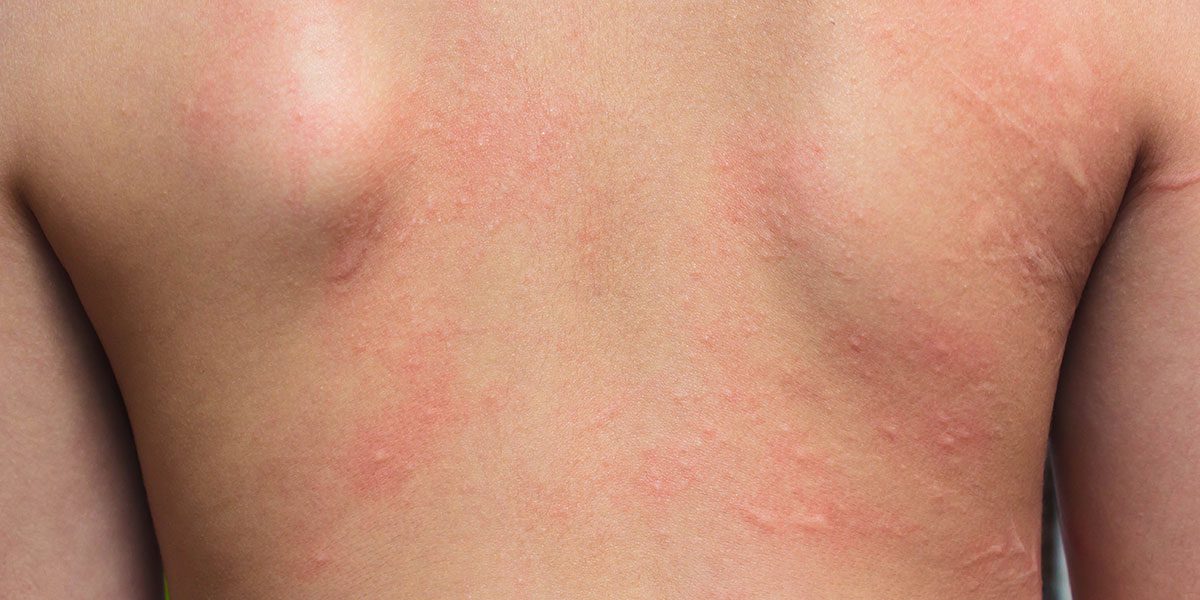
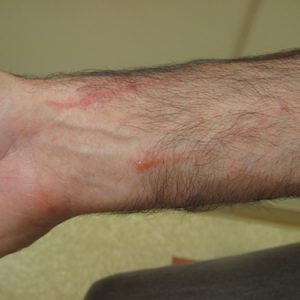 Allergic contact dermatitis is a specific hypersensitivity or allergic reaction to a substance or chemical, which causes a rash a day or two after exposure. The skin becomes inflamed with redness, blisters and scaling and is very itchy. The most common example of allergic contact dermatitis in Portland would be the rash caused by poison oak or poison ivy. Thousands of chemicals, plants and “natural” products are very good allergens. In addition, preservatives and fragrances in cosmetic products, textile dyes in clothing, rubber additives in gloves and clothing, and topical medications may cause an allergic contact dermatitis. To become allergic to a chemical an individual would need to have repeat exposure to the chemical or allergen to become allergic.
Allergic contact dermatitis is a specific hypersensitivity or allergic reaction to a substance or chemical, which causes a rash a day or two after exposure. The skin becomes inflamed with redness, blisters and scaling and is very itchy. The most common example of allergic contact dermatitis in Portland would be the rash caused by poison oak or poison ivy. Thousands of chemicals, plants and “natural” products are very good allergens. In addition, preservatives and fragrances in cosmetic products, textile dyes in clothing, rubber additives in gloves and clothing, and topical medications may cause an allergic contact dermatitis. To become allergic to a chemical an individual would need to have repeat exposure to the chemical or allergen to become allergic.
Some allergens are weak and may take years of exposure to develop an allergic reaction. The allergy can develop a couple days to weeks or months after initial exposure. Patch testing in Portland is a medical test that can identify the substances causing this reaction. If the cause is not identified and the patient continues to come in contact with the material, the patient can develop severe chronic or recurrent bouts of eczema.
Examples of Allergic Contact Dermatitis
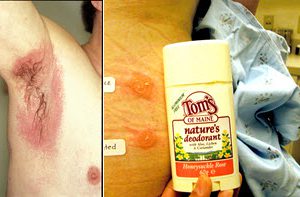 |
Another patient developed a rash in the axilla (armpit) and it turned out he was allergic to his “Natural” deodorant. |
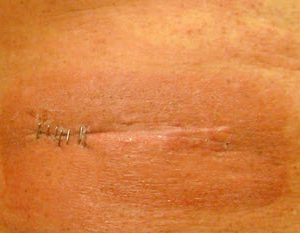 |
This is a picture of a patient’s rash. He had abdominal surgery and 2 days after the surgery he developed this weepy and very itchy rash over his incision site. Patch testing revealed a positive patch test reaction to MASTISOL which is the adhesive that was applied under his steristips after the sutures were placed. |
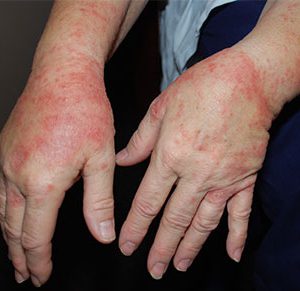 |
This patient is allergic to her gloves. The rash comes on 1-2 days after she wears the gloves and the rash is located on the tops of the hands and the wrists in the areas where the gloves are touching her skin. |
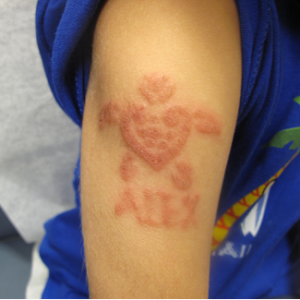 |
This patient developed an allergic reaction to a temporary Henna tattoo. The allergen is p-phenylenediamine (PPD) and is the main allergen found in hair dye. PPD is illegally added to henna tattoos to help the tattoo last longer and look darker. Once an individual becomes allergic to an allergen like PPD, the allergy is most likely going to last for life. |
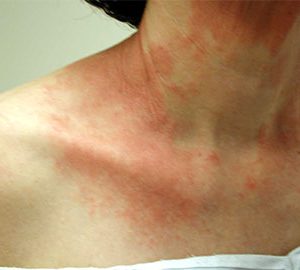 |
This patient developed a rash around the neck that had been going on for months. She was found to be allergic to the chemical in the rubber tubing, which was worn around her neck. |
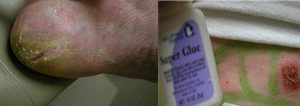 |
This patient had cracking on the heels, so she applied superglue and the cracking worsened. She developed an allergy to the chemical in superglue, cyanoacrylate. |
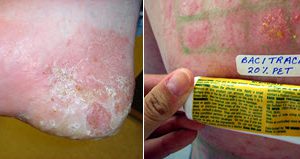 |
This patient was using bacitracin to treat dry heals. |
You can learn more about allergic contact dermatitis treatment at American Academy of Dermatology.

